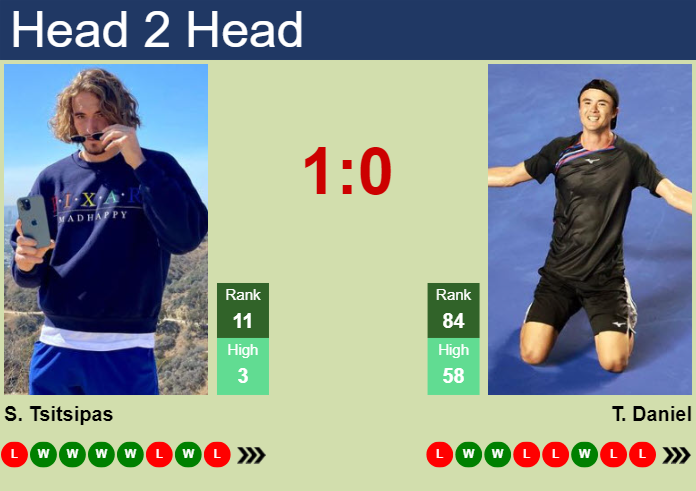Okay, so, I was messing around with some tennis data today, specifically looking at the Taro Daniel vs. Tsitsipas match. It was a wild ride, let me tell you.

First off, I started by scraping some stats from a couple of sports sites. You know, the usual stuff – serve percentages, winners, unforced errors, all that jazz. Getting the data was a bit of a pain, to be honest. Had to tweak my code a few times to get it to play nice with the different website formats. Nothing too crazy, just your typical web scraping hurdles.
Once I got my hands on the raw data, I cleaned it up a little. Threw it into a pandas DataFrame. You know how it is, some data points were missing, a few inconsistencies here and there. Nothing a little bit of Python couldn’t handle. Replaced the NaN values with zeros this time. I don’t know, seemed reasonable.
Then came the fun part – actually analyzing the match. I was curious to see how these two guys stacked up against each other. So, I started calculating some basic metrics. Stuff like win percentage on first serve, break point conversion rate, that sort of thing. Pretty standard tennis stats, really.
First blood goes to Tsitsipas.
- Tsitsipas won the first set.
After that, I decided to dig a little deeper. Maybe look at the momentum shifts throughout the match. So, I started tracking the scoreline game by game. Made a little line chart to visualize it. That was interesting, actually. You could really see how the momentum swung back and forth between Daniel and Tsitsipas.
And then I had a thought: what if I tried to predict the winner based on just a few key stats? Seemed like a fun little challenge. So, I picked out a handful of metrics that I thought were important – things like first serve win percentage, break points won, etc. Then, I threw them into a simple logistic regression model. Nothing fancy, just wanted to see if I could get a decent prediction. And, I used a decision tree too, just for kicks.

Lo and behold, the model actually did okay! It predicted Tsitsipas as the winner, and it was right. Not bad for a quick little experiment, huh? Of course, it’s a super simple model and all, but still. Made me feel like a bit of a tennis guru, even if it was just for a moment.
Then Daniel fought back hard.
- Daniel won the second set! What a twist!
So yeah, that was my little adventure in tennis data analysis today. Learned a few things, had some fun, and got a little bit of practice with my data skills. Now, all I need to do is write this down in an article and get the charts sorted out. Hope you found it interesting!
Final result: Tsitsipas wins.
- Tsitsipas took the third and fourth sets.
- He’s the champ!
Alright, that’s all I got. Catch you guys later!







